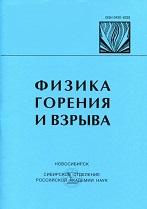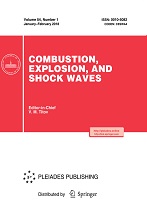|
This article is cited in 7 scientific papers (total in 7 papers)
Laminar hydrocarbon flame structure
C. Vovelle, J.-L. Delfau, L. Pillier
Institut de Combustion, Aérothermique, Réactivité et Environnement, Orléans Cedex, 45071, France
Abstract:
From the very first experimental studies, based essentially on flame propagation velocity and flame emission measurements, successive improvements in analytical and numerical techniques have contributed to make the analysis of laminar flame structure a powerful tool for extending the knowledge on combustion chemistry, thermodynamics, and transport properties. This better knowledge is very beneficial to design efficient combustion devices with reduced pollutant emission. Overall net species production rates are derived from the experimental determination of the evolution of the gas stream velocity, temperature, and species concentrations in the direction normal to the flame front. For species involved in a limited number of reactions, rate constants can be calculated at the next step. The development, in the early 1980s, of numerical codes for simulating the structure of one-dimensional laminar premixed flames the flame structure data to be directly used for validating detailed reaction mechanisms. Species analyses are still performed with techniques based on local gas sampling by probes, despite flame perturbations, but flame structure analyses have been markedly enriched by the use of non-intrusive spectroscopic techniques. The former allow the analysis of a large variety of species, and they have proven to be very well adapted to the large number of intermediate species formed in rich flames or in flames fed by heavy fuel molecules. The molecular beam mass spectrometry technique has been recently improved by the use of new photoionization sources that allow identification of isomers and extend the knowledge on intermediate species involved in formation of benzene, polycyclic aromatic hydrocarbons, and soot in flames. Amongst various spectroscopic techniques applied to flame structure analyses, laser-induced fluorescence has been largely used to perform accurate quantitative measurements of intermediate radicals that play a key role in the prompt-NO mechanism. In this study, the contribution of flame structure studies to a better knowledge of formation mechanisms of benzene and NO$_x$ is briefly reviewed.
Keywords:
flame structure, benzene and NO$_x$ formation mechanism, rich flames.
Received: 25.10.2008
Citation:
C. Vovelle, J.-L. Delfau, L. Pillier, “Laminar hydrocarbon flame structure”, Fizika Goreniya i Vzryva, 45:4 (2009), 22–42; Combustion, Explosion and Shock Waves, 45:4 (2009), 365–382
Linking options:
https://www.mathnet.ru/eng/fgv1299 https://www.mathnet.ru/eng/fgv/v45/i4/p22
|


| Statistics & downloads: |
| Abstract page: | 25 |
|





 Contact us:
Contact us: Terms of Use
Terms of Use
 Registration to the website
Registration to the website Logotypes
Logotypes








 Citation in format
Citation in format 
